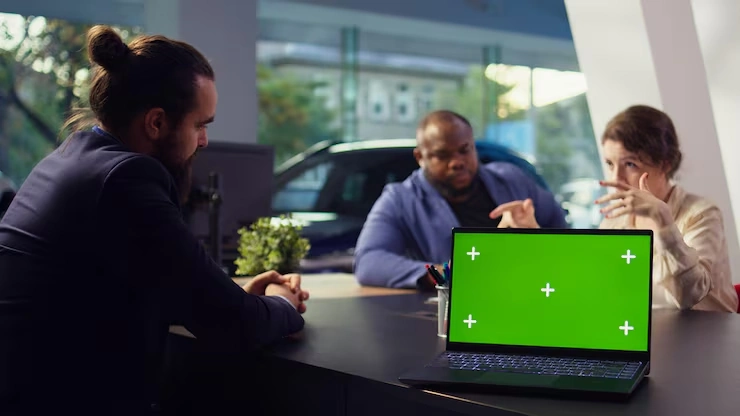NVIDIA drivers are essential software components that allow your operating system and graphics card to communicate effectively. Without the right driver, your GPU cannot fully support games, creative software, or even standard display functions.
Whether you’re running demanding design applications, playing graphics-intensive games, or simply browsing on a high-resolution monitor like the stunning display on the iPhone 16 Pro Max, the correct driver plays a major role in maintaining system performance and stability. This guide will walk you through everything you need to know to find, install, and maintain NVIDIA drivers efficiently.

What Are NVIDIA Drivers and Why Are They Important?
A driver is the link between your graphics card (hardware) and your system (software). NVIDIA drivers ensure that your GPU can execute complex visual tasks — from rendering game environments to editing high-definition video — without errors or slowdowns.
Each new driver update typically includes bug fixes, performance improvements, and compatibility updates for newly released applications or games. Ignoring driver updates can result in system errors, crashes, or missing features in supported software.
Types of NVIDIA Drivers and Their Uses
NVIDIA offers different driver types depending on how you use your system. Choosing the right one ensures that your GPU performs as expected.
1. Game Ready Drivers
Game Ready Drivers are released in coordination with major game launches. These updates are tested with new games to support their visual requirements from the day they’re released.
2. Studio Drivers
Designed with visual and audio professionals in mind, Studio Drivers support creative applications such as Adobe Premiere Pro, DaVinci Resolve, and Autodesk Maya. These drivers undergo testing with those specific applications to prevent interruptions in production.
3. Production Branch (PB) / Studio Drivers

These drivers prioritize long-term reliability and receive less frequent updates. They’re used in workstations where software stability is more important than accessing newer features.
4. New Feature Branch (NFB) Drivers
NFB drivers provide early access to features that are still being finalized. They’re suitable for users who want to test the latest GPU functionalities or those who need support for the newest operating systems.
Looking for something meaningful to mark your milestones? See what Darry Ring offers – a symbol of lasting commitment.
How to Identify the Right NVIDIA Driver for Your System
You can install NVIDIA drivers in two ways — automatically using NVIDIA’s software or manually through the website.
A. Automatic Updates with the NVIDIA App
The NVIDIA App checks your system configuration and downloads the latest compatible driver. It’s especially useful if you’re not sure what GPU model you have or want to avoid checking for updates manually.
B. Manual Driver Search (Step-by-Step)
- Go to the official NVIDIA Driver Downloads page.
- Select:
- Product Type (e.g., GeForce, Quadro)
- Product Series (e.g., RTX 40 Series)
- Product Model
- Operating System
- Language
- Product Type (e.g., GeForce, Quadro)
- Click “Start Search” to view the available drivers.
- Download the one that matches your needs.
If you’re unsure of your graphics card, open Device Manager (Windows) and check under “Display Adapters.”

Supported Operating Systems and Languages
NVIDIA drivers are available for:
- Windows 10 / 11 (64-bit only)
- Linux: Including aarch64 and standard 64-bit distributions
Language support includes English, Spanish, German, French, Chinese, Japanese, and many others. Selecting the right language ensures that installer messages and interface details are clearly understood.
Driver Details to Check Before Downloading
Before downloading a driver, it’s important to review the accompanying metadata:
- Driver Name: Specifies whether it’s Game Ready, Studio, etc.
- Version Number: Helps you compare with currently installed drivers.
- Release Date: Indicates how recent the update is.
- Operating System Compatibility: Crucial for installation success.
- File Size: May matter if your system has limited storage or bandwidth.
- Language Support: Choose one that fits your preference.
Looking to balance performance with well-being? Learn how products from Rise Dispensary fit into your everyday routine.
What to Do if No Driver Is Found
If your search results in “No Drivers Found”, here are some useful steps:
- Recheck your selections: Ensure you selected the correct GPU series, OS, and language.
- Try legacy or older product lines: Some older GPUs are supported in archived sections.
- Update your OS: Drivers may not appear if you’re using an outdated system version.
- Use GeForce Forums or Contact Support: Sometimes issues are known and already discussed in community threads.
Additional Tools and Driver Packages
Beyond the standard drivers, NVIDIA offers additional tools that may be relevant to advanced users:
- CUDA Drivers (Mac): Required for developers using GPU acceleration.
- PhysX System Software: Adds physics-based rendering support in games and simulations.
- Quadro Sync Firmware: Maintains synchronization across multiple displays.
- NVWMI / Quadro View: Used in enterprise settings for managing workstation displays and GPU behavior.
Why Regular Driver Updates Matter
Keeping your NVIDIA drivers up to date is a crucial part of maintaining a stable and capable system, whether you’re using it for gaming, content creation, or everyday productivity. Graphics driver updates are not just about performance boosts; they address a wide range of functional and compatibility issues that directly impact how your hardware behaves.
Here’s why installing the latest drivers should be part of your routine:
1. Resolve Software Conflicts and Compatibility Bugs
Driver updates frequently contain fixes for bugs that may be causing problems with specific applications or games. These can include issues like crashes when launching programs, display glitches, or performance slowdowns due to unresolved conflicts with operating system patches or third-party software. Updating your driver ensures you’re not using outdated instructions that cause your GPU to misbehave under certain workloads.
2. Prevent Instability in New Games and Creative Tools
Newly released games and creative applications often rely on the latest graphics APIs and GPU features. If your driver is outdated, the system may struggle to handle these requirements, leading to freezing, crashing, or unexpected shutdowns. NVIDIA collaborates with game developers and software vendors to release drivers in sync with new titles, minimizing these risks. That’s why “Game Ready” and “Studio” driver versions exist — they’re released with a clear understanding of the requirements for each platform or application.
3. Improve Performance in Graphics-Intensive Applications
Each driver update may include optimizations that help your GPU manage workloads more efficiently. These can result in:
- Higher frame rates in games,
- Smoother real-time video rendering,
- Reduced latency in creative programs,
- More consistent power and thermal management.
You’ll also benefit from better support for newer technologies like DLSS, ray tracing, and NVIDIA Reflex, which aren’t always fully supported or stable on older drivers.
4. Maintain Compatibility with System Updates
Operating systems like Windows and Linux receive regular updates. Occasionally, these updates modify how system resources interact with graphics hardware. Without a corresponding update to your GPU driver, new system-level changes can cause graphical glitches, broken applications, or complete incompatibility with the GPU.
Updating the driver ensures that your graphics card understands and supports any changes introduced at the OS level. This becomes especially important when major OS releases are rolled out or if you’re running a dual-boot or customized system configuration.
5. Fix Performance Issues Like Lag and Visual Artifacts
If you’re seeing screen tearing, stuttering, graphical distortions, or slow response times, an outdated driver is one of the most likely causes. These issues often go away with a clean driver update. NVIDIA frequently releases hotfixes or stable branch updates that directly address user-reported problems in popular games and software.
Common Issues and How to Troubleshoot
Some frequently reported driver issues:
- Black screen after update: Use Safe Mode to uninstall the driver, then reinstall a stable version.
- Low resolution: Ensure the correct driver is installed, not the generic Microsoft display adapter.
- Frequent crashes: Could be an outdated or incompatible driver version.
- Fan spinning loudly or high GPU usage when idle: Try a clean install of the driver using GeForce Experience or the custom install option.
FAQs
Can I use the same driver for multiple GPUs?
If your GPUs are the same model or from the same generation (e.g., SLI setups), yes.
Do laptops use different drivers from desktops?
In many cases, yes. Choose the “Notebook” version of your GPU during driver selection.
Is it better to use Studio Drivers on a gaming PC?
If you prioritize reliability over the latest features, Studio Drivers may be preferable even for casual gamers.
How often should I update drivers?
Once every 1-2 months or when you install a new game/application that requires a specific driver version.
Do I need third-party tools to manage drivers?
GeForce Experience is sufficient for most users. Manual installations are also available on the NVIDIA website.
Summary and Final Recommendations
NVIDIA drivers are critical for getting the most reliable output from your graphics card. By understanding the different driver types and how to install them correctly, you reduce the risk of system errors and can run visual applications more efficiently.
Use the NVIDIA App for automatic updates if you prefer not to manually check. For those who like more control, the manual method works well. Always make sure you’re using official sources to avoid security risks or corrupted downloads.
Want to support performance in more than just your graphics card? See how Plant Sumo helps with plant-based meals designed to support a modern lifestyle.
If you need help choosing a driver or dealing with system issues related to NVIDIA GPUs, check your system documentation or use the forums on NVIDIA’s support page.





